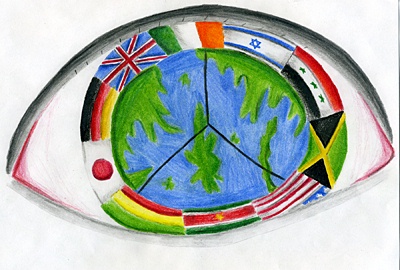All Nonfiction
- Bullying
- Books
- Academic
- Author Interviews
- Celebrity interviews
- College Articles
- College Essays
- Educator of the Year
- Heroes
- Interviews
- Memoir
- Personal Experience
- Sports
- Travel & Culture
All Opinions
- Bullying
- Current Events / Politics
- Discrimination
- Drugs / Alcohol / Smoking
- Entertainment / Celebrities
- Environment
- Love / Relationships
- Movies / Music / TV
- Pop Culture / Trends
- School / College
- Social Issues / Civics
- Spirituality / Religion
- Sports / Hobbies
All Hot Topics
- Bullying
- Community Service
- Environment
- Health
- Letters to the Editor
- Pride & Prejudice
- What Matters
- Back
Summer Guide
- Program Links
- Program Reviews
- Back
College Guide
- College Links
- College Reviews
- College Essays
- College Articles
- Back
Knowledge by the Colors
The fifty meter wall of deities, sculptures, and statues loom high above. Depicting the life of Princess Meenakshi, one could not be more dazzled. They smile, they frown, they kill, they embrace; the statues behold stories repeated throughout the centuries, dazzling, hypnotizing. The Meenakshi Amman Temple, an overwhelming spectacle, offered a story one could not forget. I, however, could not even begin to understand.
An immigrant to the United States, I've gradually accepted the American culture rather than maintaining my own. At first, not much had changed, my parents and I being each others' only friends, I was a shy child to anyone else. Unfortunately, as my horizons widened and interaction with my American surroundings became the norm, the ties between the Indian culture and me slowly began to fade away. It was not that I didn't care, seeing as my parents are strong advocates of religious practice, but religious history was not so strongly enforced. Since childhood, I've understood the basic information regarding our gods and goddesses, but the detailed history of Hinduism and how these Gods came to be, I was not familiar with. At religious gatherings, I was little affected when seeing other Hindu children perform skits and plays, recite poems, and sing songs about our religion's history. I couldn't envision any significant benefit from this additional information. However, walking into the grand Meenakshi Amman Temple, I realized how important ethnic history really is.
Feeling as if the temple's visitors, including my parents, all understood what the sculptures, paintings, and artifacts meant, I was a little jealous. My sister, being the youngest in the family, tapped my hand, pointing to the vibrantly colored paintings. 'Dada! (Brother) Look at that pink sari!'
'Yeah that's a nice color isn't it?' I replied while trying to understand the picture itself.
I knew I wouldn't get much satisfaction from this Temple through simply enjoying its 'pretty colors'. I was eager to understand the images I was surrounded by. Though I knew my parents were capable of explaining them to me, I decided to approach the priest for answers to my many questions. Being 13 years old at the time, I felt some internal shame for being so ill-informed, but I expected the priest would be happy to indulge my hunger for knowledge.
'Pujari (priest), ei painting golo kei bolche?' (What do these paintings depict?)
As predicted, the priest was happy to help, but I could sense his slight surprise in my naivet'. This subtle reaction was sufficient for me to realize how important our ethnicity is. As the priest explained the epic legend, MahÄbhÄrata, and its similarities to today's leading issues such as, politics, social arguments, and international relations, I realized the importance of cultural history. The knowledge is simply a necessity.
I left the Meenakshi Temple with my fair share of Hinduism history. The existence of many of the Gods made much more sense and I left appreciating my culture more than before. I learned that the expression of one's ethnicity and religious background is key to expressing one's self. Now more knowledgeable about my religion, I recite poems like the other kids, and participate in the events I was once reluctant to. I finally understand my ethnicity, I finally understand my origins, and I finally understand myself.

Similar Articles
JOIN THE DISCUSSION
This article has 0 comments.
